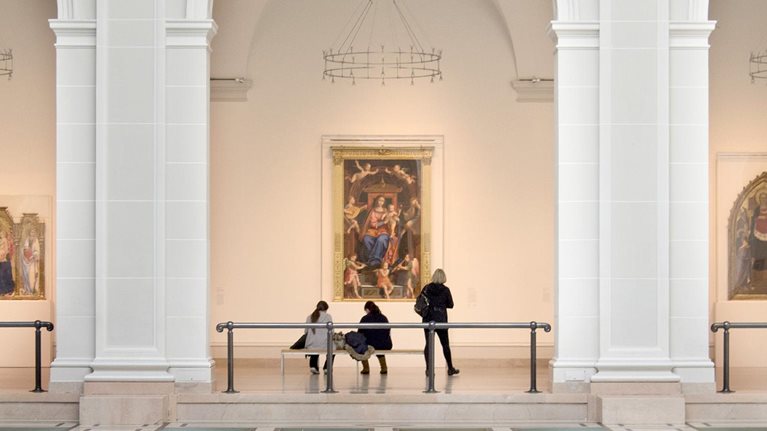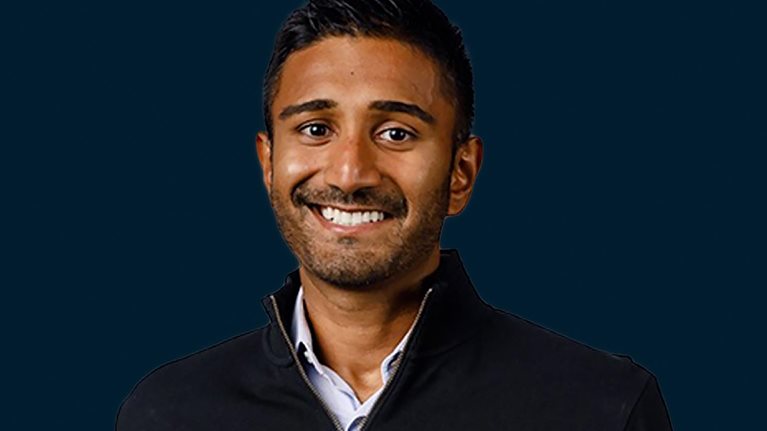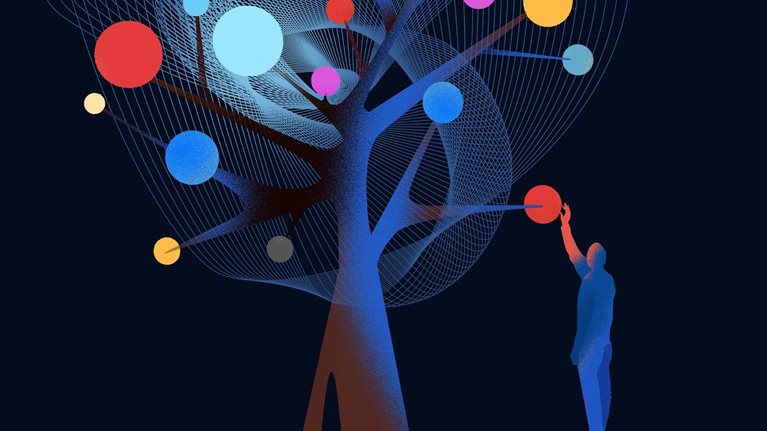The conventional view of art may be that it is incompatible with technology. But in recent years, digital forms of art have complemented and perhaps enhanced traditional arts such as opera, film, and dance. In her ten years at the helm of the Kennedy Center, Deborah Rutter has led a variety of initiatives to foster interdisciplinary programming. Rutter spoke with McKinsey senior partner Ian Jefferson about the critical role of technology in the arts and how digital art forms can heighten the live experience. An edited transcript of their conversation follows.
Ian Jefferson: Coming out of COVID-19, there was a ramp-up in the use of digital platforms and digital access to the arts. Recently, there has been an increase in conversations about generative AI and its role in the arts. Have you seen technology change the way the arts are performed, created, and experienced? And are there any examples that you think we can draw lessons from?
Deborah Rutter: Technology is something that’s always happening faster than those of us who don’t live in a technology world can keep up with. I remember the conversations when we were going from vinyl LP to eight-track to cassette tape to CD, and the trauma of thinking, “Oh, my goodness, it’s going to put us out of business.” I think the fear can come from the unknown. That fear is understood in the world of an artist. But artists are explorers. Artists are always changing, always evolving, looking to see how their art will change over time. So technology is absolutely an important ingredient, an important piece of the action, as it were. It brings in new audiences and decreases the perceived distance between audience and artist.
Ian Jefferson: What would you say about the fears and uncertainties that people felt initially about technological changes? What good came out of them that they maybe weren’t anticipating?
Deborah Rutter: The music was more widely disseminated around the world. People had a better understanding of and easier access to the music. That continues today, when you can find anything on your phone within a few seconds—exploring this pianist versus that pianist, this blues singer versus that blues singer singing the same song. This engenders interest in an art form that might not have existed if you could only experience it live. The ability to have access is what’s so vital and valuable to the artist.
Ian Jefferson: What technologies has your institution experimented with over the last few years?
Deborah Rutter: Probably the most important thing is the use of LED screens and digital art, which has allowed us to have vast amounts of flexibility and maybe even, if I dare say, greater volume and variety and interesting set design. It brings down some of the costliness and the cumbersomeness of creating new sets for every scene of a play, dance, opera, or ballet. That digital element brings a beauty and a vibrancy to the stage.
Just last fall, we debuted an extraordinary new opera, Grounded, about a fighter pilot who becomes a drone pilot. We were able to tell that story with extraordinary digital technology, different screens in different positions, changing the stage’s dimensionality. It was using technology in a traditional 400-year-old art form and was a magical way of talking about technology being a part of our world. It was really powerful.
Ian Jefferson: How have you personally reacted to these experiments? What have you heard from others about their emotional connection to the art?
Deborah Rutter: What I thought was so powerful about the Grounded production was that it was essentially a human story that was impacted by technology. It was the human story that was ultimately moving. Technology has made the art more dynamic and even more realistic. Without taking away from the human experience, we have to learn how to use technology to maximize effect. We have to learn to understand it. I think the whole discussion about the role of technology and social media is vital.
Ian Jefferson: Art is happening in a broader context. The world around us is changing. You mentioned social media. People are now inundated with television series and movies [on streaming platforms]. So how have audience preferences around technology shifted? What impact do you see this having in terms of their preferences for art?
Deborah Rutter: We rely on technology to communicate and entice you, invite you, and welcome you to the Kennedy Center. Almost every aspect of life and work today has some form of technology related to it. What draws us together with art, though, is how you felt at the end of that shared experience. And that seems to be working because people are coming to performances of all sorts, whether there’s some form of technology related to it or not. AI is a hot topic in many of the conversations in the arts now, but in fact, people are still drawn to live, in-person experiences, some with technology, some without. Perhaps we’ll have a live music performance and video happening at the same time. Which is the draw, the live music or the technology? These are some very basic concepts.
I’ll never forget talking with John Williams, the composer, about having been to a performance of the silent film [Battleship] Potemkin and hearing it with a live orchestra. There’s a bit of a click track to know where you need to be in the score to go along with the film. And at one point, I looked at John Williams and said, “When will we be able to have E.T. with the full screen with the voice and then the live music?” And he said, “Not for a really, really long time. Because it’s too hard to strip out the sound of the music and keep the voices there.” And look at us today. You can watch E.T., you can watch Jurassic Park, you can watch Star Wars at home in the comfort of your sweatpants and your couch. But these [live music and video performances] sell out like crazy because technology has made it possible for us to create a live experience that you can share with other people.
Ian Jefferson: Dissemination of art and access to art can be enabled by technology. What’s the right balance between an in-person shared experience in a room with other people versus getting access to that art digitally, either on your own or in a shared way with others?
Deborah Rutter: I think the biggest issue is the expectation of the end user on what they can and will pay for. How do artists earn a living if everything they put up has to be free? The biggest concern is ultimately about making sure artists are compensated, and compensated fairly. The compensation structure is the most important thing that people must understand. You can’t expect to have these experiences and not pay for them in one form or another.
Ian Jefferson: Tell us about a different dimension of access and dissemination. For the Kennedy Center, education is a top priority. How does technology enable education for a national institution such as yours?
Deborah Rutter: The Kennedy Center has a national mandate to reach across the country to support arts education. We receive funding from the US Department of Education. It’s a competitive grant, and that grant encourages us to disseminate our work. For decades, we have had a portal for digital learning for teachers and families that provides online classes, master teachers, and curriculum development. This has been an enormous resource across the country.
During the pandemic we realized that we had planned all these live performances for students, schools, and families. We decided to go ahead and produce them to be offered on our website. Now we offer virtual field trips. We still have thousands of kids coming into the Kennedy Center, but now we can reach around the world with this virtual program. Most important, we reach the parts of our own country that don’t have such resources locally.
Ian Jefferson: What are some of the lessons you’ve taken away from prior eras of technological change?
Deborah Rutter: Technology comes in so many different types and formats. It’s really been exciting to see how new instruments are created. It was a lute, followed by a mandolin, followed by a guitar, followed by an electric guitar. And think about the variations on the development of instruments. In all cases, there’s a little bit of a hesitancy and then a real push into it to understand and then embrace it. I think that we don’t know or understand all of what AI means for us. But we can and do see ways that AI is doing work that we couldn’t do on our own or can do faster. The question is: How do we harness that new power to the benefit of the artistic process? It’s scary. But we’ve got so many examples of how technology has helped advance the artistic process and output. And it has not wiped out the fundamental benefit, which is people coming together and having a shared experience.
Ian Jefferson: Over the course of your time at the Kennedy Center, how have you seen digital technology change the way that the organization engages with patrons?
Deborah Rutter: We have archived programs for many years, but the concept of creating new work and sharing it digitally was one that we only started exploring with great energy when I got to the Kennedy Center about a decade ago. We now have a whole digital department. We’ve expanded our multimedia team so that we can capture all kinds of programming and create new shows that we broadcast. Even the way that we’re capturing our signature works, the Mark Twain Prize and the Kennedy Center Honors, are done at a higher level . The editing is much quicker, and we use clips of the programs that have garnered more interest for the Kennedy Center overall. As a result, the volume of views on social media has grown exponentially. So digital has helped our brand and has not detracted from any of the live performances.
Ian Jefferson: As we continue the conversations on emerging technologies, what do you hope to see?
Deborah Rutter: Technology continues to advance at an ever-increasing pace, which is going to create yet unknown opportunities across society. It is my belief that deeply integrating artists and the opinions of creative professionals throughout the development of new technology—AI, holograms, you name it—will only benefit us all.


